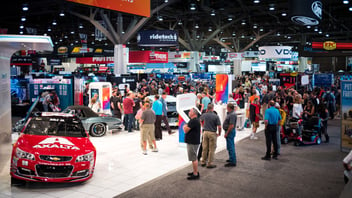Who is Driving Sustainability in Last-Mile Logistics Solutions?
Sustainability is one of the causes where consumers are willing to walk the talk. But don’t just take our word for it; according to the IBM 2020 Report, 57% of consumers are willing to change their eCommerce purchasing habits to reduce their environmental impact.
Today, consumers are more aware of social causes and intentionally seek brands that align with their values. This is especially true for the tech-savvy Gen Z population that engages in social shopping (online, social-media-based shopping experiences). These purpose-driven consumers are ready to pay a premium price for products and services that align with their values and lifestyle.
But, are companies willing to walk an extra mile toward green logistics? We get that you might have reservations, but hear us out.
The United Nations warned that the world must take immediate action to prevent drastic global warming effects. As per OECD, by 2030, e-commerce growth will drive a 33% increase in carbon emissions or 3.1B tonnes of CO2. The data makes it clear. A green logistic solution is not only what the customer wants but also what our planet needs.
What is ‘Green Logistics’?
Green logistics means keeping the environment, planet, climate change, and sustainability at the forefront of your operations. It’s a conscious effort to reduce the supply chain's carbon footprint, deal with carbon emissions from waste management, packaging, and recycling, and reduce energy consumption in an environmentally-friendly way.
Sustainability in the Last Mile
Sustainability isn’t only a last-mile problem. But, last-mile logistics is where things can become more challenging. At the final mile, delivery routes become complex. The shipments are split into much smaller orders as packages are sent to their destinations.
In a traditional logistic solution, hundreds of gas-guzzling vehicles emit large quantities of carbon dioxide and other unwanted greenhouse gases to ship one order. While an increasing number of consumers are concerned with these practices, they often don’t want to experience the longer delivery times or higher prices that can come with more sustainable options.
This argument is the green consumer paradox, a concept that tells us how consumers demand more sustainability from companies but aren't necessarily willing to follow through if it means higher costs or delayed service.
As a business, green logistics means finding a balance between ecology and economy. It’s essential to create awareness about the harmful effects of carbon dioxide through brand messaging while allowing consumers to make a decision. The more visible your logistical costs are to the customer, the easier it is for them to decide.
Implementing Sustainability into Logistics
Wondering how you can add some ‘green’ to your logistics solution? Try:
- Taking a step back, analyzing which mile of your business contributes to the problem, and focusing on fixing it.
- Using technology to find or build solutions that can measure your business’ footprint on the environment and help you minimize it.
- Optimizing inventory and mileage. Decide which warehouse and fleet will take the least time, fuel, and emissions to reach the delivery destination.
- Incentivizing and educating customers on green-delivery options. Charge a premium for 24-hour or fast deliveries.
- Opting for hybrid or electric vehicles that produce fewer carbon emissions.
Partner with a logistics provider like Ziing to ensure a foolproof green logistics ecosystem. We utilize efficient, environmentally-friendly vehicles, regularly analyze our carbon footprint, and employ the 4R strategy: reduce, recycle, reuse, and recover. We also employ technology to ensure the most efficient routes are used during the delivery process.
You can count on us to help you manage your ecological footprint with sustainable and effective last-mile solutions. Contact us today to learn more.






